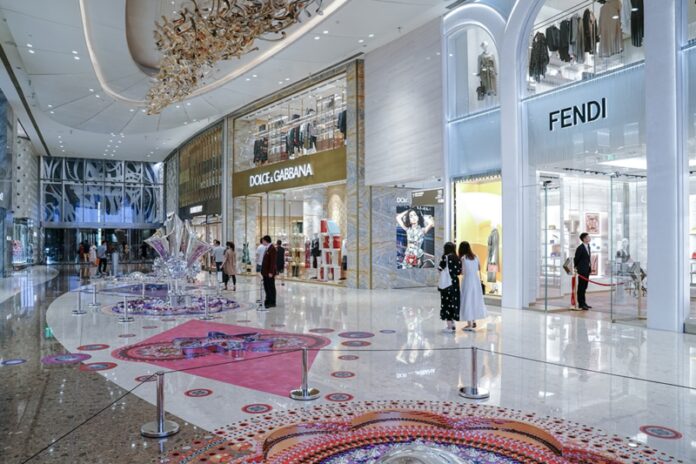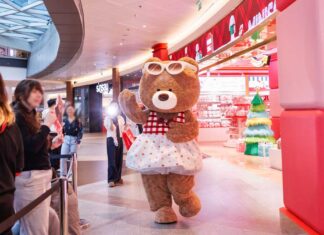The global luxury goods market is recording an increase in sales in 2022 and is expected to see further growth and expansion next year, despite economic turbulence.
The 21st edition of the Bain & Company–Altagamma Luxury Study, has been released this November showing how the global luxury market performed in 2022 and what are the expectations for the industry from 2023 until 2030.
Global Luxury Market Performance in 2022

The global luxury goods industry overall is projected to achieve a market value of some €1.4 trillion in sales revenue this year, growing by 21% from 2021 (at current exchange rates).
The personal luxury goods industry, in particular, saw a further growth acceleration this year, coming on the heels of the V-shaped rebound enjoyed in 2021, the research shows. Boosted by a strong market performance across quarters, and despite macro-economic indicators worsening globally, as well as specific challenges in China, the personal luxury sector is set to see the value of its sales jump to €353 billion in 2022, marking an advance of 22% at current exchange rates (or 15% at constant exchange rates) versus the previous year, the study projects.
The performance of the last quarter of this year, in determining the final outcome for 2022, will largely depend on the progressive lifting of Covid-19 pandemic restrictions in China, as well as the evolution of European and American luxury consumer confidence in the face of rising inflation and cost of living pressures, and a potential recession in the US and European economies.
But despite present and continuing economic challenges, the luxury market continued to perform strongly throughout this year to date, with winners for brands across the board, and positive growth for some 95% of brands.
Yet luxury brand players are continuing to invest in future growth, even in the face of high inflation and rising costs, so their profitability is slightly decreasing, following an unprecedented increase in 2021.
Claudia D’Arpizio, a Bain & Company partner and leader of Bain’s Global Luxury Goods and Fashion practice, the lead author of the study stated:
The nouvelle vague – the new wave – of the luxury goods market will demand evolution amid disruption, adaptation amid uncertainty, and an expansion of creativity in all of the basics – all while new trends and concepts develop.
The Future of the Global Luxury Market

The 2023 luxury market is now set to be more resilient to recession than during the 2009 global financial crisis
Even in the face of recessionary conditions expected across leading economies into 2023, the Bain and Altagamma analysis forecasts further expansion in sales and market value for luxury goods through the coming year and decade.
The analysis notes that, even with a possible global recession next year, the impact on the industry could be different from that of the 2008-2009 global financial crisis.
The luxury market now appears better equipped to cope with economic turbulence with its consumer base both larger and more concentrated, and customer-centricity and a multi-touchpoint ecosystem set to provide resiliency amid disruptions.
As a result, Bain-Altagamma analysis sets out two scenarios, with sales growth in the personal luxury goods market set to be between 3 to 5% or 6 to 8% (at constant exchange rates), depending on the strength of the economic recovery in China and the ability of the US and Europe to withstand economic headwinds.
Tech-enabled profit pools and strong generational trends to drive 60%+ market growth to 2030
Prospects for the personal luxury goods market out to 2030 are also highly positive. The report finds that solid market fundamentals and new tech-enabled profit pools are set to boost the market’s value to €540-580 billion by the end of the present decade, from €353 billion estimated for 2022 – a rise of 60% or more.
A powerful factor for sector growth during the rest of the decade will be generational trends
‘Gen Y’ and ‘Gen Z’ accounted for the entire growth of the market in 2022. In coming years, the spending of Gen Z and ‘Gen Alpha’ is set to grow some three times faster than for other generations until 2030, making up a third of the market. This is, in part, driven by a more precocious attitude towards luxury, with Gen Z consumers starting to buy luxury items some 3 to 5 years earlier than Millennials (at 15 years-old, versus at 18-20), and Gen Alpha expected to behave in a similar way.
This generational factor is one of the critical trends affecting the development of the luxury market in 2022, and for the rest of the decade. Taken together, the study characterizes these trends as the ‘nouvelle vague’ – or ‘new wave’ – of developments for the sector.
Commenting on the critical trends and themes for the luxury industry up to 2030, Federica Levato, partner at Bain & Company and leader of the firm’s EMEA Luxury Goods and Fashion practice, co-author of the report, said:
In their path to 2030, luxury brands will need to leverage their cultural avant-garde position and insurgent excellence to overcome the challenges ahead and shape the world. Just as they recently did through excellent products and human-centric engagement, they must now deal with new priorities: ESG, creativity chain, tech & data. These domains are rich with opportunities for luxury brands – but investments for future growth are crucial.
Other five key trends:

Old continents are still leading, but new markets are surprising.
While US luxury market is still strong, and Europe managed to recover beyond 2019 thanks to solid local demand alongside an extra boost from US and Middle Eastern tourist shoppers, new markets are surprising the industry. Southeast Asia and Korea are winning in terms of growth and potential.
Although there will never be “another China” in terms of growth’ contribution to the industry, India and emerging Southeast Asian and African countries have significant potential nevertheless. Yet, they still require an infrastructure catch-up to facilitate the expansion locally.
Among the rising stars, India stands out for growth potential, which could see its luxury market expand to 3.5 times today’s size by 2030, propelled by increasing interest and evolving attitudes and behaviors among (young) customers towards luxury goods.
Meanwhile, China itself, which remains crucial to the long-term of the luxury market, continues to confront a challenging phase due to Covid lockdowns and is still performing below 2021 figures. China’s luxury market is expected to recover between H1 and H2 2023.
Stores are winning back their role
Retail continues to dominate, while online channels are seeing a normalization in their growth. The coming years will see a further blurring of the boundaries between ‘mono-brand’ and eCommerce, which will increasingly push brands to take an ‘Omnichannel 3.0’ approach, enabled and enhanced by new technologies.
Expanding customer base, yet elevated
The luxury market’s consumer base is broadening with some 400 million consumers in 2022 expected to expand to 500M by 2030. This market growth is driven by factors that go beyond aspiration, with consumers becoming more knowledgeable and choosy and intensified competition for loyalty and advocacy.
The higher and top end of the luxury market is also expanding at the same time and accounted for some 40% of market value in 2022 compared with 35% last year, with these consumers hungry for unique products and experiences, and putting brands VIC (Very Important Client) strategies into overdrive.
Over-performance of all categories, restocking wardrobe in the rising “post-streetwear” era
All luxury categories have now recovered to 2019 levels or better, with hard luxury, leather, and apparel leading the resurgence following the pandemic. A deliberate (and effective) ‘elevation strategy’ has driven a progressive price increase across the industry (driving around 60% of the 2019-2022 growth) without damaging volume growth.
This trend has also been reflected in product categories, through the shift to the ‘post-streetwear’ era, which maintains some elements of so-called streetwear (such as gender fluidity, occasion-less apparel, inclusivity, and sports-driven inspiration) but goes beyond its style codes through new and enhanced techniques, materials and functionalities.
Luxury and art are converging
Luxury is converting into art, with the ultimate objective of transcending from its original form, rooted in craftmanship and functional excellence, towards broader meanings, empowered by imagination and symbolic power, to build its handmade creations.
Read more: Retail in 2023: The Ultimate Guide for Business Growth
About Bain & Company
Bain & Company is a global consulting firm that helps ambitious leaders transform their companies into tomorrow’s world leaders. Founded in 1973, today the company operates across 64 cities in 39 countries.
More about Bain & Company at www.bain.com









